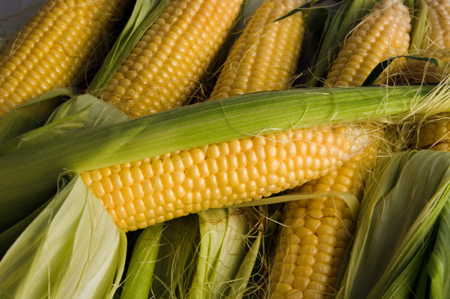 (Agrimoney) – Whether positive movement in the last session was down more to a hotter US weather outlook than the data revisions in the latest Wasde crop report, well, it hung around into Wednesday too.
(Agrimoney) – Whether positive movement in the last session was down more to a hotter US weather outlook than the data revisions in the latest Wasde crop report, well, it hung around into Wednesday too.
Not that headway was massive, nor universal, with Kansas City hard red winter wheat for September falling by 0.4% to $4.21 ½ a bushel as of 08:50 UK time (02:50 Chicago time), having come out relatively poorly from the Wasde (the US Department of Agriculture’s flagship monthly report on world crop supply and demand).
The Wasde, in its first breakdown of the US wheat balance sheet by class, showed that it was in hard red winter wheat that the forecast 124m-bushel increase in domestic wheat inventories over 2016-17 would occur.
(This helped by record yields in many areas, helping US production of hard red winter wheat soar 25% year on year to 1.03bn bushels.)
‘Not a self-fulfilling prophecy’
While the USDA did forecast more hard red winter wheat, in particular, being used in feed rations, keeping some curb on the rise in inventories, Commonwealth Bank of Australia’s Madeleine Donlan flagged that this was “not a self-fulfilling prophecy”, ie will require price incentives to enact.
“Wheat will need to be priced competitively against corn to get the excess supply into stable hands,” Ms Donlon said.
“And, while Kansas spreads to corn have declined sharply, they are still some way from being considered ‘extreme’ over the long sweep of history.
“We expect the [prices of the] two grains will need to continue to converge.”
More upgrades ahead?
However, futures in Chicago-traded soft red winter wheat, by contrast, nudged 0.1% higher to $4.39 a bushel for September delivery.
The Wasde wheat class breakdown showed US production of the class only 11m bushels higher year on year, at 370m bushels, with stocks actually falling over 2016-17, by 5m bushels to 152m bushels.
Not, it has to be said, that the outlook for prices of either winter wheat class looks rosy, many commentators believe, despite a surprise cut to the Wasde estimate for the world wheat balance sheet too.
Richard Feltes at broker RJ O’Brien said that “there is nothing in today’s US or global wheat supply and demand that will compel managed fund wheat shorts to cover”.
And managed money, after all, had a near-record net short in Chicago wheat as of last week.
Further upgrades to the US wheat harvest could be in the offing, given strong results of the ongoing harvest, with RJ O’Brien seeing a further upgrade of 24m bushels.
‘Caught the market by surprise’
Stronger gains were seen in the row crops, and in particular in New York-traded cotton, which closed the last session up the exchange limit (usually 3.0 cents a pound) and tested the widened limit of 4.0 cents a pound earlier on Wednesday.
The gains followed a Wasde downgrade of 3.4m bales to a five-year low of 91.3m bales in the forecast for world stocks at the close of 2016-17.
“While a reduction in global ending stocks was not unexpected given the strong uptake seen at Chinese reserve auctions this year, the scale of the fall appears to have caught the market by surprise,” said CBA’s Ms Donlan.
“Ongoing weather concerns in US cotton regions also added to the market’s momentum.”
The December cotton contract – having touched limit up 74.78 cents a pound earlier, a fresh two-year high for a nearest-but-one contract – eased back to 73.16 cents a pound, a gain of 3.4% on the day.
It was also up more than 11% so far this week.
‘Back trading weather’
Back in Chicago, corn futures for December gained a more modest 0.4% to $3.61 ½ a bushel, fighting a battle with their 10-day moving average at this level.
The Wasde was “slightly bullish” for corn in showing US 2016-17 carryout inventories comfortably below the market forecast, Rabobank said.
While the US harvest forecast for this year was upgraded to reflect bigger sowings, as revealed in official data two weeks ago,
The weakness in wheat, a rival in feed rations, remains a bit of a weight on values, but a bigger concern for the market is the US weather.
“With the report over, the market is back trading weather,” said Benson Quinn Commodities.
“Rains are forecasted for the Midwest this week with a longer range forecast of hot, dry weather.”
‘Massive area of heat’
Indeed, it is this which appeared really to be grabbing investors’ attention.
“The strong performance from soybean futures on Tuesday is due to the weather forecasts,” said Joe Lardy at CHS Hedging, with the Wasde showing minimal surprises for the oilseed.
“The latest model runs show a massive area of heat in the heart of the Corn Belt. This is accompanied by lower-than-normal precipitation.”
He added that “it feels like the market is pushing risk premium firmly into the soybean market at a much greater rate than corn”.
This could be a reflection that July, the key month for corn yields, in bringing the heat-sensitive pollination process, is nearly half way through, while August is the vulnerable month for soybeans.
Still, soybean futures themselves for November gained 0.3% to $10.90 a bushel.




